Cistus labdanum: extraction and olfactory profile
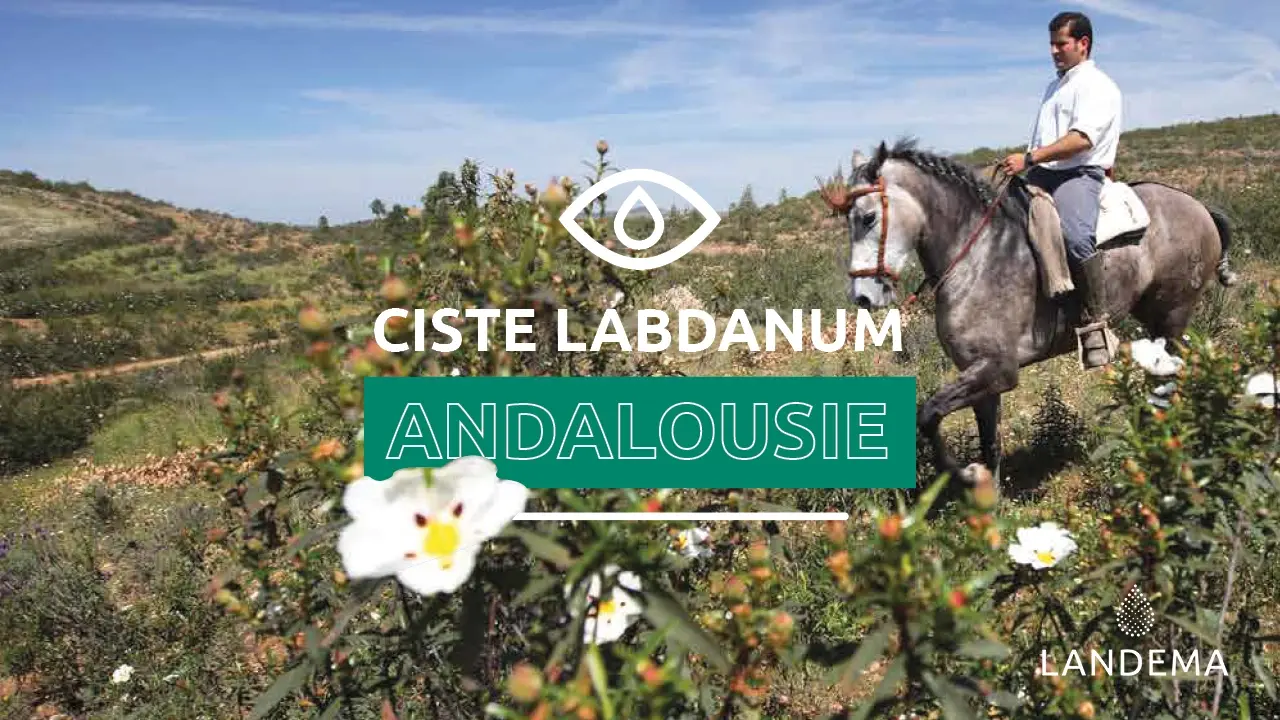
january 31, 2023
Cistus Labdanum in Andalusia
Remarkable among other Cistus species, Cistus Ladaniferus is a shrub found throughout the Mediterranean region, which has been used for 3,000 years in perfumery for the gum it secretes in summer. Labdanum gum has an extraordinarily powerful balsamic and amber scent, which earned it a place of choice in ancient incense under the name Ladanum resin.
Since 1988, our parent company Biolandes has been based in the heart of Spain's Huelva province, producing Cistus and Labdanum extracts on site. And in 2013, it developed an automated workshop for the production of Labdanum gum. Today, the majority of the world's production of Cistus derivatives and Labdanum gum comes from this region, Andévalo.
We are delighted to invite you to discover the unique history of an exceptional plant and country, written into the present by men of character and tradition.
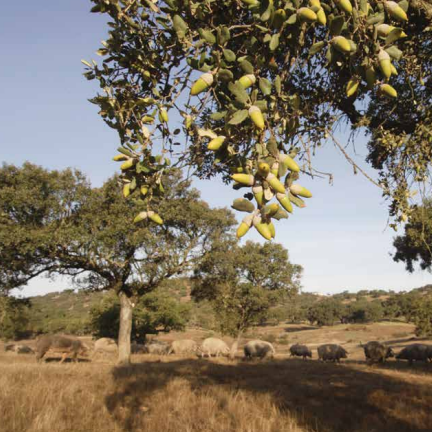
Puebla de Guzman, a village of traditions
Landema's parent company, Biolandes, has its production site in this former mining village, whitewashed every year, which is the cradle of a rich culture and strong traditions.
A land of Andalusian horses and "Pata Negra" pigs, who feed on acorns to make Jamon Iberico the finest ham.

The April Romeria
Every year at the end of April, Puebla de Guzman celebrates the Virgin de la Peña, and the whole village goes up to the hermitage in procession. For four days, the townsfolk come together to honor the patron saint and share their passion for horses and festivities.
The Ciste flower mantle
Embroidered on the Virgin's garment, the cistus and its flower are part of the village's heritage. Tears of emotion are followed throughout the night by traditional songs and dances, glasses of brandy and parades of horsemen.
The tears of Christ
In April, the fields of Cistus are covered with white flowers that are delicate and enchanting, but without perfume. Like white poppies, the flowers are of ephemeral silk, lasting just two days. The crimson-red stains on the five petals of the Ciste flower have always been known as "Christ's tears".
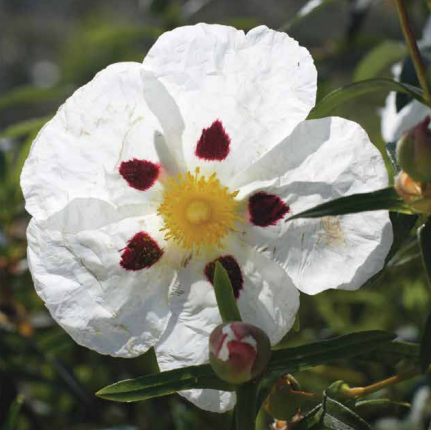
Landema - Groupe Biolandes
Amber in the hills
After flowering, from April to June, Cistus twigs sprout a new shoot whose stem turns red as the gum forms. In warm weather, the amber scent of Labdanum invades the hills.
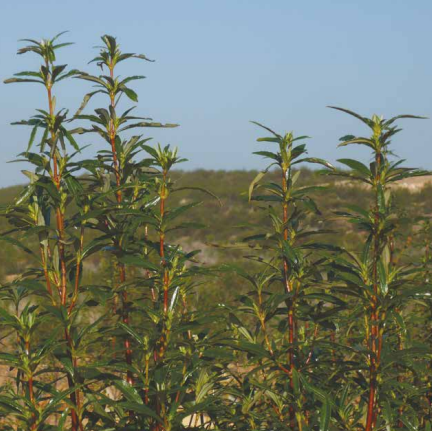
Gum in the sun
To protect themselves from the furnace of the Andalusian summer, stems and leaves secrete a gum whose enveloping scent is one of the most powerful in the plant world. In July, the branches covered in this viscous gum are ready to be cut.
Cistus harvesting
In Puebla de Guzman and the surrounding villages, Cistus is harvested from July to October to produce gum Labdanum, or to use the twigs for distillation or extraction. After cutting, the stems grow back, and in every empty space a young plant sprouts. Cistus then reclaims its rights, providing shelter for rabbits and partridges.
Sickling from dawn to noon
Throughout the summer, from dawn to noon, teams of pickers cut the twigs with sickles, make bundles and load cars and carts. They cut only the current year's growth, the tender, gum-laden tops. It's hard work, and their clothes will carry the scent of cistus for the rest of the campaign.
A family affair
In Andévalo, Cistus is often the business of gypsy communities. In the villages, for several decades now, families have been harvesting the faggots in the morning and transforming them into gum Labdanum in the afternoon. The cut fields will be recolonized by Cistus the following year and can be harvested again three years later.
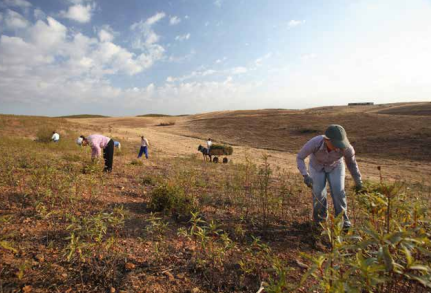
Landema - Groupe Biolandes
Gum distillers
Traditionally, Labdanum gum was made in the field. A fire, faggots and a few cans indicate a gum-making station. First step: boil the twigs in water and soda. After boiling, a bucket of acid neutralizes the water and the raw gum is formed. Using a stick, the gum is worked to remove the water and make it homogeneous.
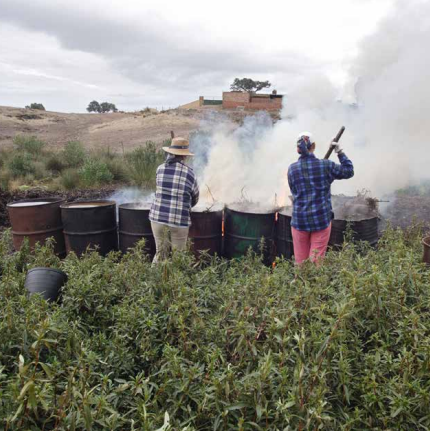
Changing times
Fire, soda and acid in the fields... Their process is from another age, but it provides them with a seasonal income and is part of their history. Gum distillers negotiate with the authorities, but fear the banning of their trade, which they know is inevitable. Increasingly, gum is produced in workshops using a more controlled process.
Responsible development
Aware of the shortcomings of traditional Labdanum gum production, Biolandes is continuing its integration into the industry by creating the first automated gum production workshop that is more respectful of both people and the environment.
Biolandes Andalucia in Puebla de Guzman
Since its construction in 1988, the Biolandes plant has been producing the full range of Cistus and gum derivatives. Every year, the Biolandes team organizes the harvesting and processing of 3,000 tons of faggots, and proudly showcases the product of 7,000 days of gathering!
To discover Landema news and products, join us on our social networks, instragram, facebook and linkedin.
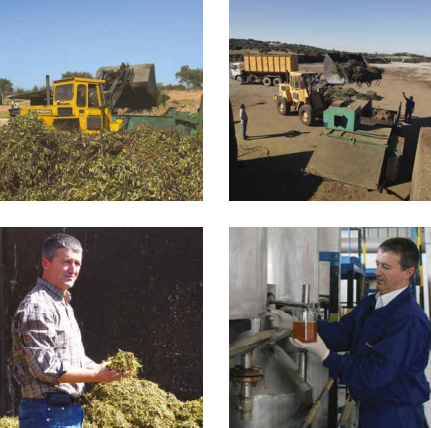
A source of fuel and energy
To obtain the best quality essence, the Cistus delivered to the plant is crushed and distilled continuously for 24 hours. Over a ton of essence is produced every summer, much of it certified organic. Exhausted Cistus is stored on site and used as fuel to produce all the site's steam.
Concretes and resinoids
The extraction workshop produces Ciste concretes, the basis for an absolute and several fine fragrance specialties, of which dynamone is the best known. Labdanum gum produced in the plant is transformed into resinoids and absolutes. Products distilled or extracted from the twigs are called "Ciste", while gum products are called "Labdanum".

Day and night
During the Ciste campaign, the factory works day and night. By six o'clock in the morning, when the night shift has finished filtering the petrol and making the concrete flow, further back in the hills, the cutters have already taken up their sickles.
Cistus Labdanum in perfumery
ORIGINS: 80% of Cistus derivatives come from Spain, mainly Andalusia. Limited production also takes place in Morocco, Portugal and Corsica. Products from Ciste de l'Estérel (France) have become anecdotal.
HARVESTING: The global harvest of Cistus is around 10,000 tons of faggots each year, of which 6,000 to 7,000 tons are processed into Labdanum gum.
PRODUCTION: Production of raw gum Labdanum is estimated at between 300 and 350 tonnes, depending on the year. Cistus distillation produces around 1.5 tons of essential oil, and extraction 60 to 70 tons of concrete.
BIOLANDES: Biolandes Andalucia is the world's leading producer of Cistus derivatives. Our site produces between 40% and 50% of the essence and concrete on the world market.
You can find Cistus Labdanum (Cistus ladaniferus) absolute and Cistus ladaniferus BIO essential oil now on Landema's online boutique.
Landema, a subsidiary of the family-owned Biolandes Group, specializes in online sales of essential oils and other plant extracts direct from the manufacturer. It benefits from over 40 years' know-how in the cultivation and processing of high-quality raw materials.



